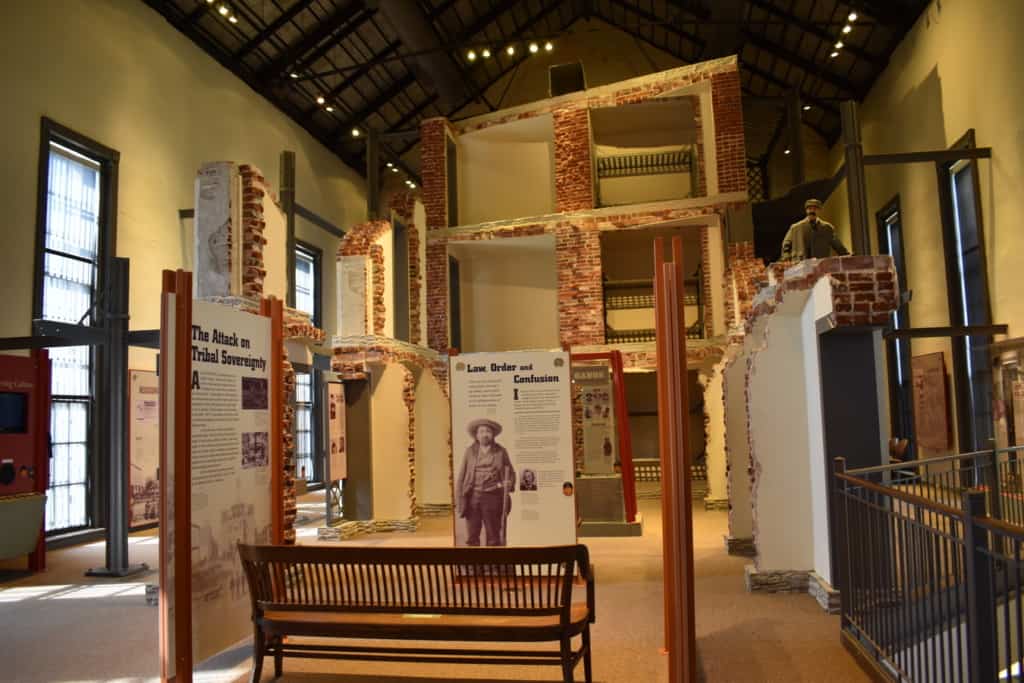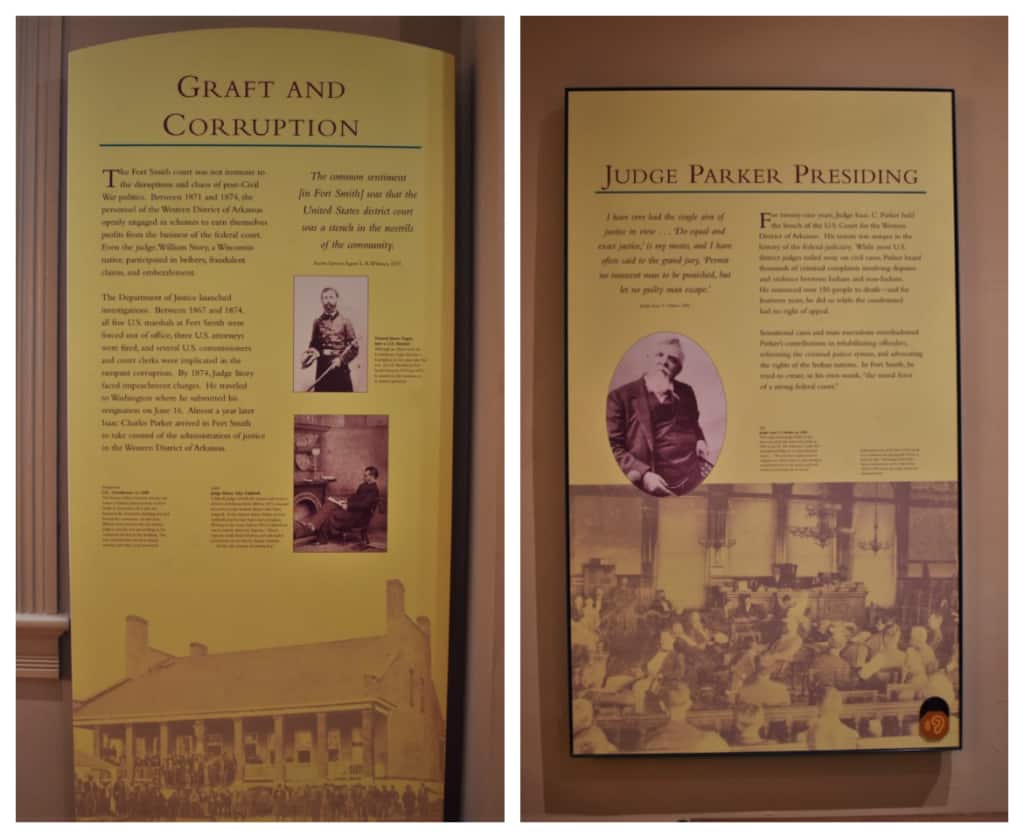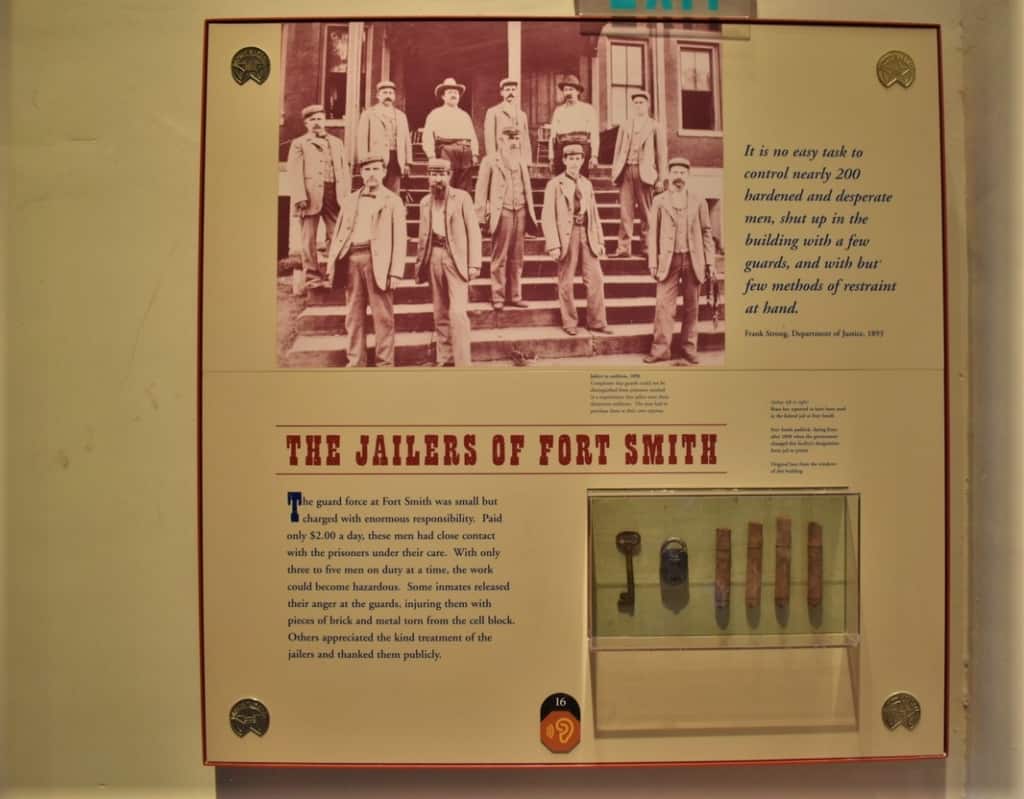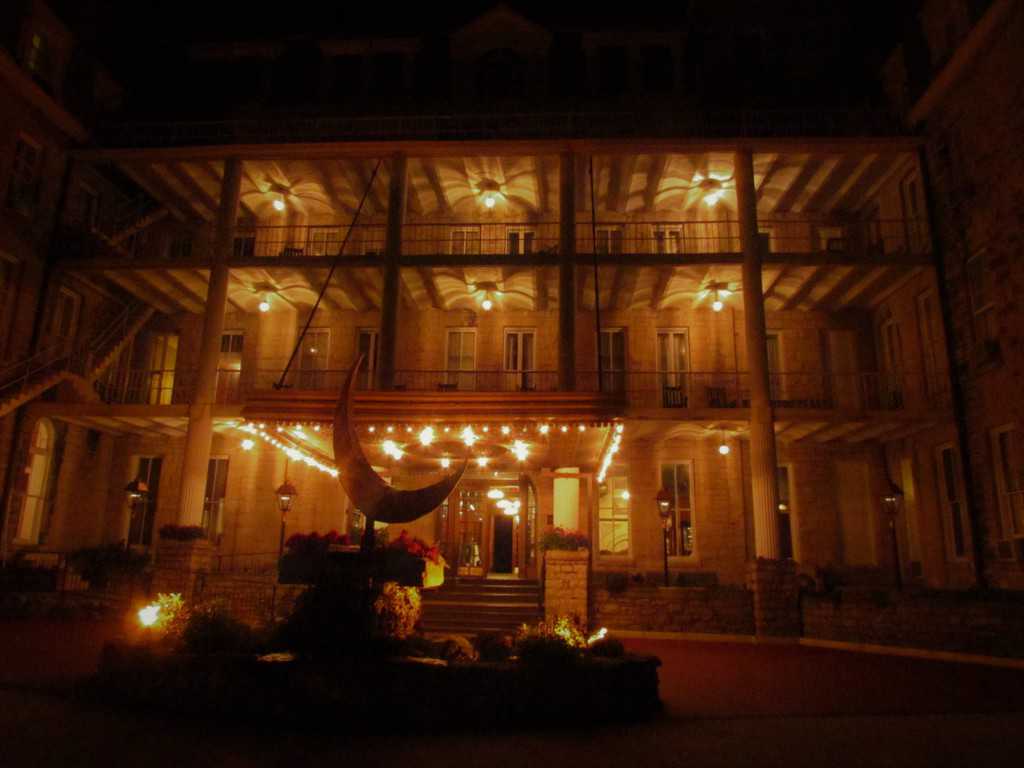Real life is often more sensational than make believe. Being a fan of westerns, I was excited to finally visit Fort Smith, Arkansas. It was in this city that a real life legend held court during the Wild West days. While many are unaware of Judge Parker’s court, it left an indelible mark on the history of the American West. Our visit to Fort Smith included a wide range of experiences, but learning more about facing “the Hanging Judge” was high on our list of must-dos.
We want to thank Experience Fort Smith and the Fort Smith National Historic Site for hosting our visit. Rest assured all opinions are our own.

Law & Disorder
We had already enjoyed a visit to the Fort Smith Museum of History, where we learned the general timeline of the city. By following it up with a stop at the Fort Smith National Historic Site, we were able to dive further into this unique portion of our country’s development. Our story begins not in Arkansas, but just across the river in Oklahoma territory. For decades, the American government had been slowly restricting the territory of the native Indian tribes. This had been accelerated during the Andrew Jackson presidency. While the natives attempted to resist, ultimately most would follow the Trail of Tears to Oklahoma territory.

Changing the Narrative
After the end of the Civil war, life in America was filled with uncertainty. In the absence of oversight, many officials found the temptation of wrongdoing too enticing. Such was the case in Fort Smith. In 1871, President Grant had appointed William Story to preside over the recently formed Western District of Arkansas. Within four years, he would find himself facing potential impeachment proceedings, due to allegations of graft and corruption. To save face, Story resigned his post, and was replaced by Judge Isaac Charles Parker. For the next 21 years, he would leave a legacy of actions that would be memorialized in books and movies.

Deputy U.S. Marshals
One of Judge Parker’s first acts was to appoint Bass Reeves as a Deputy US Marshal. This appointment made Bass the first African American lawman west of the Mississippi River. Parker would proceed to appoint around 200 deputies to help maintain the peace in western Arkansas and Oklahoma territory. The job was difficult on good days and nearly impossible on bad ones. During Parker’s tenure, more than 65 deputies would die in the line of duty.

Round ’em Up
As we explored the Fort Smith National Historic Site, we began to grasp the difficulties that the marshals faced on a daily basis. They were tasked with covering 74,000 square miles of territory, filled with bushwhackers, thieves, and murderers. The city of Fort Smith stood at a crossroads and Judge Parker was attempting to help usher it into the future. The rough and rowdy Wild West days were drawing to an end and industry was beginning to take a foothold in the region. The city’s position along he Arkansas River made it an important stop along the supply route for the region. It was dire that crime was reigned in, so the city could advance.

Familiar Sight
The deputies found themselves facing an almost insurmountable number of criminals. While riverboats were important to the supply chain, it was also used to transport liquor. Many of the offenders brought into Judge Parker’s court faced charges of introducing “spiritous liquors” into Indian territory. This was a federal crime that was difficult to enforce. The growing number of cases meant that the Fort Smith jail was overflowing with prisoners. The former mess hall, located in the basement, was converted into two communal cells. These provided unsanitary and cramped conditions that earned the jail the nickname of “Hell on the Border”.

Guard Duty
The marshals had to have a specific set of skills to be successful in their duties. Knowledge of Indian territory, marksmanship, and the ability to blend in with civilians were paramount. A lucrative outing could last two weeks and result in the apprehension of multiple suspects. Bringing them back to Fort Smith, the prisoners were shuttled into the cramped cells. With those overcrowded conditions, it made guard duty especially dangerous. The dark, dank spaces were jammed full of all levels of criminals. Notable prisoners of Judge Parker include; Belle Starr, Cherokee Bill, and the Dalton Gang.

Judge Parker’s Court
On his first day of court, Parker sentenced eight men, guilty of murder, to death. Six of them would be executed at the same time, while one died during an attempted escape and another had his sentence commuted. The judge was not in favor of capital punishment, but stood by the need to apply the law, as it was written. During his tenure, Judge Parker presided over nearly 13,500 cases. He sentenced 160 to death and 79 of those were executed. To keep up with the extensive workload, Parker held court six days a week.

Locked Up
In 1883, Congress reduced the jurisdiction of the Western District of Arkansas. While this was intended to help lighten the workload, an influx of settlers to the region contributed a new set of problems. Judge Parker’s court was so noteworthy that it has been represented in multiple books, television shows, and movies. Rooster Cogburn and True Grit portrays the judge’s court, as does one of my all-time favorites, Hang ‘Em High. Having an opportunity to walk through these historic spaces, left us with a better appreciation for life during Judge Parker’s court days. Have you ever heard of Judge Isaac Parker?






Great review of Judge Parker and the early days of Ft. Smith! So many interesting stories come from that Era.
So glad you enjoyed it. We find these historic discoveries to be the fuel that keep us searching.